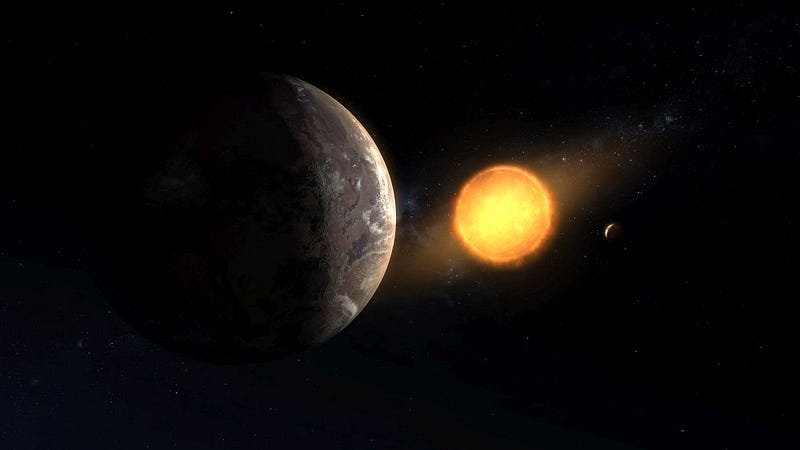Kepler-1649c: An Earth-like Exoplanet on the Edge of Habitability
Written on
Chapter 1: Introduction to Kepler-1649c
Introducing Kepler-1649c, an exoplanet comparable in size to Earth, located at an optimal distance from its sun that could potentially support life. However, this proximity may also pose significant risks.
Positioned about 300 light-years away from our planet, Kepler-1649c orbits a small, red dwarf star. Although this star emits limited warmth, the planet orbits closely, akin to a camper huddled near a small fire on a cold night.
With its location in the habitable zone, Kepler-1649c has a higher likelihood of hosting liquid water, which is essential for life. The presence of oceans, rivers, and seas increases the chances of life emerging on this distant world.

This artistic illustration depicts the landscape of Kepler-1649c. Image credit: NASA/Ames Research Center/Daniel Rutter.
Receiving approximately 75% of the radiation that Earth receives from the Sun, Kepler-1649c’s surface temperature and radiation levels are influenced by its atmosphere and magnetic field—details that remain largely unknown.
At just 6% larger than Earth, Kepler-1649c exhibits characteristics that make it even more Earth-like. Thomas Zurbuchen, associate administrator of NASA’s Science Mission Directorate, remarked, “This fascinating, distant planet heightens our hopes that we will find a second Earth among the stars.”
However, the very closeness to its star that provides warmth may also present substantial dangers that could extinguish any life that might develop on its surface.
Interplanetary Hide and Seek
Kepler-1649c was detected within previously analyzed data from the retired Kepler spacecraft. The automated algorithm Robovetter initially overlooked this planet, mislabeling it as a “false positive” due to temporary dimming in the star's brightness.
Such dimming can occur because of a planet's transit or fluctuations in the star's brightness. The Kepler False Positive Working Group later revisited the data for the Kepler 1649 system, revealing that this exoplanet completes an orbit around its star every 19 days and 12 hours.
While other exoplanets, such as TRAPPIST-1f and possibly Teegarden c, are known to be Earth-sized, Kepler-1649c stands out for being the closest match in size and temperature while also residing in its solar system's habitable zone.

This artistic representation shows Kepler-1649c orbiting its red dwarf star, with Kepler-1649b visible to the right. Image credit: NASA/Ames Research Center/Daniel Rutter.
Kepler-1649c is not alone; it shares its system with Kepler-1649b, which is 8% larger and 28% more massive than Earth. Discovered in 2017, this planet orbits its star at a distance significantly smaller than that between the Earth and the Sun.
“This particular discovery is thrilling—not only because it exists in the habitable zone and is Earth-sized, but also due to its interaction with the neighboring planet,” stated Andrew Vanderburg, a researcher at the University of Texas at Austin.
The Future of Exoplanet Exploration
The upcoming generation of observatories, including the TESS spacecraft, promises to revolutionize our understanding of exoplanets.
“The insights gathered from missions like Kepler and TESS will undoubtedly lead to remarkable discoveries as the scientific community continues to hone its methods for identifying promising planets year after year,” Zurbuchen anticipates.
Whether extraterrestrial astronomers on Kepler-1649c are observing Earth and contemplating the potential for life on our planet remains an enigma.
James Maynard, the founder and publisher of The Cosmic Companion, is a New England native who now resides in Tucson with his wife, Nicole, and their cat, Max.
Enjoyed this article? Join us at The Cosmic Companion Network for our podcast, weekly video series, informative newsletter, news updates via Amazon Alexa, and more!
Chapter 2: Exploring Kepler-1649c
Kepler 1649c - an Earth like exoplanet? - YouTube
This video explores the characteristics of Kepler-1649c, discussing its Earth-like attributes and potential for hosting life.
Kepler 1649c - Earth Sized Exoplanet | Goldilocks Zone Planet Songs - YouTube
This video delves into the specifics of Kepler-1649c, emphasizing its position in the habitable zone and what that means for the possibility of life.
